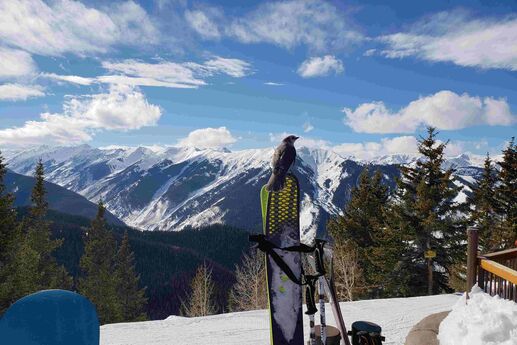Plan to Ski or Snowboard? Strengthen up Now!

Snowboard-and-ski season is fast upon us. And while your mind may be ready for the powder, chances are your body isn’t. That’s because skiing and snowboarding are sports that require a specific type of lower-body muscle strength, which you don’t typically get from summer activities. Fail to build up the right muscles -- primarily supporting the knees and lower back -- and you leave yourself open to some nasty injuries.
Think about your body when you ski: Your knees are absorbing all the impact from the terrain up through the body. “The knee gets tremendous overuse due to the forces placed on it,” says Mike Wunsch, CSCS, director of fitness at Results Fitness in Santa Clarita, Calif. “And it has to take the slack from the now locked-in ankle.”
Weak quads and hamstrings can make the knee joint vulnerable to a ligament injury, such as an LCL or ACL tear, either from a fall or from ski tips running in opposite ways.
“The lower back is the other area that absorbs a lot of impact,” adds Courtenay Schurman, MS, CSCA, co-owner of Body Results Fitness in Seattle and author of The Outdoor Athlete. “Since a downhill skier spends so much time in a crouch position, if he or she has a weak core, like the weakest link in any chain, that area runs the risk of injury.”
For a safe and successful winter-sports season, Wunsch recommends the following workout. Do two to three sets of eight to 12 reps of each exercise twice a week.
SNOW STRENGTH
Box step-down: Stand on a box 12 to 24 inches high and step off, working on controlling your body’s downward movement and nailing the landing. Alternate the lead leg throughout the set.
Lateral hops: Keeping feet directly underneath you, quickly hop sideways without pausing during landing phases. After several hops one way, reverse direction. Keep chest up, and maintain good posture throughout.
Pause squats: Simply pause in the bottom squat position, keeping your muscles flexed, before coming up. You can use a light load (a bar or dumbbells held at the sides) and pause several seconds or go heavier and pause for just two seconds.
Single-leg balance: Snowboarders need to work on balance and building up endurance in the foot-stabilizing musculature. Work up to several minutes (as that’s how long a run can last) standing on one foot with the other lifted off the ground, knee up.
Lateral lunge: Step to the right with the right foot, keeping toes forward and your feet flat. Squat through the right hip while keeping the left leg straight. Squat as low as possible, holding this position for two seconds. Push back to the starting position and repeat to the opposite side.
Diagonal wood chops: Keep legs shoulder-width apart, knees soft. Using both hands, hold a dumbbell alongside your right ear, with elbows slightly bent. (Picture yourself holding up an ax, ready to chop wood.) Flex abs and do a slight squat as you rotate and bring arms down to the side of your left knee. Slowly bring arms back up to starting position. Switch sides after each set.
The Pallof press: Standing with the side of your body next to a cable machine, hold the cable handle with both hands (one on top of the other) right in front of your chest. The cable pulley should be in the same horizontal plane as your abs, and the cable should be taut. Brace your abs and “press” the handle straight out in front of you. Then return the handle back to your chest. Keep moving the handle back and forth while trying to keep it in a straight line (indicating that you are stabilizing your torso well). Switch sides.
SNOW CARDIO
Cardio at the end of your workout should be in a similar ratio to the work/rest ratio for your sport. If your slope runs are short and sweet (like for rails, jumps, etc.), do several short, super-intense bursts followed by short rest periods (such as 15-second sprints followed by 30 seconds of rest). If you expect to do long runs, surfing and carving the mountain, do longer periods of medium-to-high intensity with longer rest periods (three-minute bouts on the elliptical, for example, and two-minute rests).

